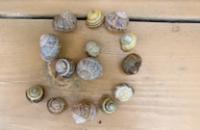
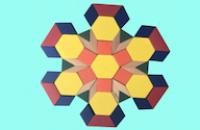
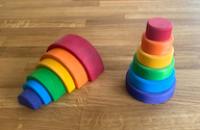
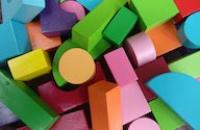

Children often enjoy playing in an imaginary small world environment, for example, the zoo, jungle, farm, town map, with animals, cars, people...
Adults could provide small world play figures and an area with separate compartments or boxes, fences, sand, etc.
The Activity
Present the animals or characters and materials to make an environment for them. Below we use the farm as an example. Invite the children to make up a story about where the animals go. Then they might be rearranged or decide to go elsewhere.
Encouraging mathematical thinking and reasoning:
Describing
Tell us about where you have put the animals. What's happening - where are they going now?
What a lot of cows you've got! How many animals do you think the farmer has altogether?
Which animals do you think you have most/least of? How do you know?
Reasoning
Why have you decided to put the cows here? Why is the pig-pen smaller than the sheep-pen?
What size field do you think the horses should have? Why do you think that?
Roughly how many pigs do you think will fit in that field you are building/have built?
How could the cows get to the milking parlour without going through the horses' field?
Opening Out
Rina wants to have a farm as well, how could she share some of your animals? Do you think the field for the cows could be any better - if so, how?
What if another five horses arrive? Will there be space in your farm for them? How will the farmer know if any of the animals are lost?
Recording
Let's make a picture of your farm. Can we show where the farmer should put all the animals?
Shall we have an animal stock-take?
Can you make a list or a tally of all the different animals on your farm today, so we can check that they are all there tomorrow?
The Mathematical Journey
Shape and space:
- positional language e.g. next to, opposite, between, behind, underneath, inside, outside...
Measures:
- developing language to compare and contrast e.g. bigger, taller, much bigger, a little smaller...
- explaining that you can fit more sheep in a field because they are smaller
Number:
- counting and cardinality - progressing from knowing some number words, to saying one number for each object, then knowing the number of the whole group
- comparing numbers and estimating
Development and Variation
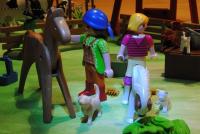
A visit to a farm or zoo can stimulate children's small world play. Observing the different enclosures and space that each type of animal requires provides an opportunity for children to discuss ideas about size and area.
Dinosaur caves, the zoo, the jungle, the sea-side, or a town map can enable similar mathematical talk.
Children's own collections of objects can provide similar opportunities - see the NRICH activity Collecting.
Resources
A range of materials for the children to make fences, compartments and environments e.g. recyclable boxes, material scraps, lolly sticks, sand etc.
Paper, card, pens and scissors for making labels, maps and plans.
Download a PDF of this resource.
Acknowledgement: Helen J Williams

